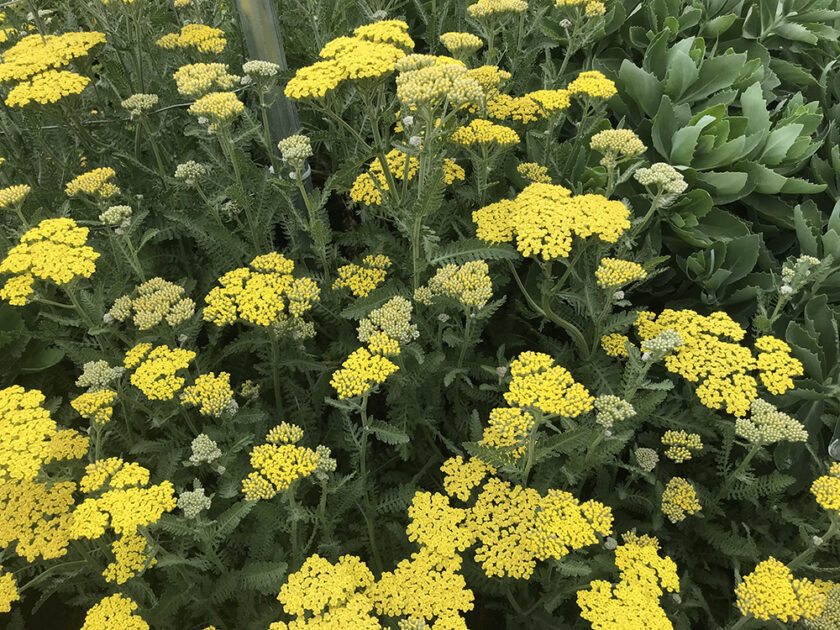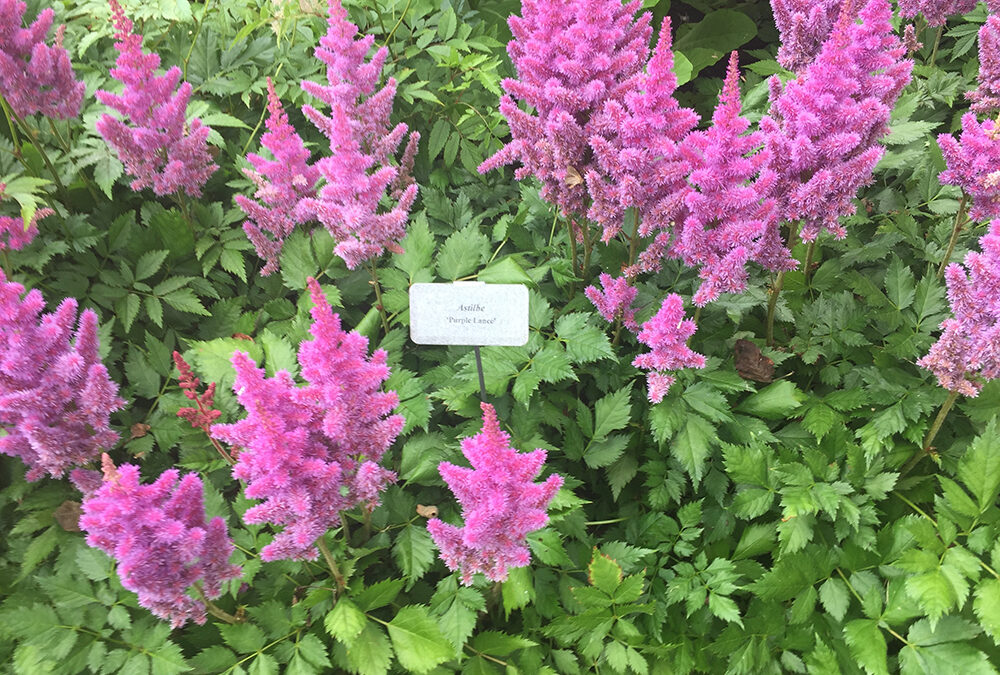Let It Grow
By Tammy Thornton
Over time, your garden will grow, eventually leading to too much of a good thing. As some perennial plants mature, they will grow so large that they become tired and unhealthy-looking. Others will spread out to the point that they outgrow their welcome in certain spots of the garden. Both of these types of plants could benefit from being divided. When you divide a plant successfully, you are cutting off a piece of the original plant (parent plant) and creating a new plant that will grow independently. This is one method of propagation of plants that can rejuvenate an older plant or simply give you new plants to expand your garden. Like teenagers cutting the apron strings, some of these divisions will thrive in their independence better than others. Dividing your plants in spring will allow these new plants to spread their wings and develop strong roots of their own to endure the heat of summer, and later, the cold and freezing temperatures of winter.
Certain plants will have telltale signs that they are ready to be divided or split. Clumping plants will begin to show bald spots or bare spots in the center. Other perennials may become weak and floppy or begin to flower less or have smaller blooms, showing that they are competing for nutrients and losing. Sometimes a plant becomes a monster that must be tamed. Though it seems cruel to cut apart a seemingly healthy plant, you will actually be doing them a favor, as overgrown plants will begin to show their age. Dividing these plants will give them new life, though at first they may show some signs of the disturbance. This is also a way to preserve a beloved plant, since you will now have multiples of the “same” plant, giving you more chances for it to survive if something happens to the parent plant.

Early spring is a good time to divide plants that are just breaking dormancy. Some good candidates would be hostas, yarrow, coreopsis, and astilbe. For these types of plants, my tool of choice is usually a spade. I find my way through the middle of the plant and make a decisive slice straight down, being sure to go deep enough to keep the roots. Then I go back to my trusty shovel and dig deeply around the section that I am removing. Be sure to refill soil in the cavity that you have created next to the parent plant, and give it a dose of water. You can also dig up the entire plant and cut it up above ground. I had to do this a few years ago with an enormous spirea shrub that was too large and difficult to cut through while it was in the ground. The parent plant did not mind a bit, and it has now grown large enough that it’s about ready to be divided once again. You can also divide certain plants just after they have flowered or in early fall. It is not a good idea to divide plants when they are flowering, because they are focusing their energy on blooming and you will cause them undue stress that may harm the plant.
Mary McDermott, a local gardener who leads formal and informal presentations on propagation techniques and was a Master Gardener and instructor for over 15 years, gives us some well-thought-out advice regarding plant division. Her main theme is to remember that you must have a combination of “roots and shoots”. Save as many roots as possible and be sure to have “shoots” which consist of the stems, buds, and leaves of your division. Tuberous plants such as dahlias and cannas are among the easiest to divide, followed by fast spreaders that put out runners like strawberries and monarda (bee balm). For tubers, use a sharp garden knife that is sanitized before each cutting. Runners are usually small in early spring and easy to dig with a trowel.
When planning on dividing your plants, be sure to water them well the day before, so that they are happy and well-hydrated. Dig your hole for the new location before you start your division. That way they can go directly into the soil before they dry out or realize they have been moved. Sometimes the new home is not ready; in this case, simply plop the division in a pot of soil and keep it in a shaded area and water well. Choose an overcast day for the big move when a few cooler days are in the forecast. I love to plan a division when rain is predicted that night or the next day. Once you have completed your division, coddle the new plant and be sure to keep it well-watered as it develops its root system and becomes acclimated to its new home.
Every plant has its own special needs, so it is best to do some research on your specific plant before propagating it by division. McDermott offers us a little trick to cutting through the “noise and clutter” of online sources. In the search bar, add “+.edu” to your search of a particular plant, this will direct you to universities like Rutgers, Stockton, and Penn State that are excellent sources, often targeted specifically to homeowners. Of course, you can always reach out to the Shore Local News and we will find the answers you need. Send your comments and questions to shorelocalgardener@gmail.com.
Tammy Thornton lives with her husband, children, and crazy pets while enjoying a life of gardening, cooking, and going to the beach.

















